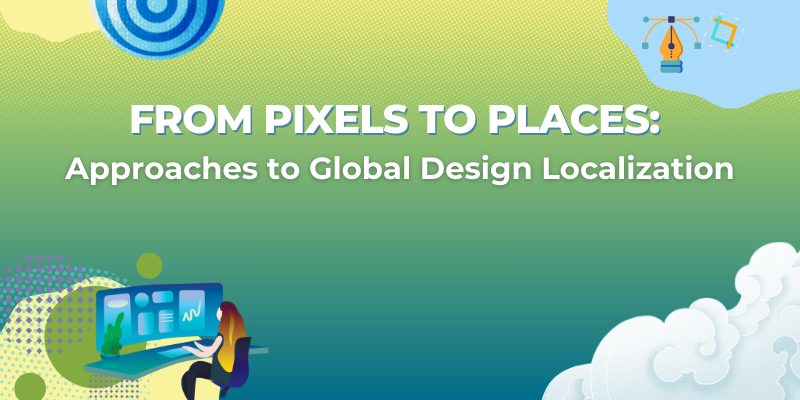
With multi-national campaigns, designers must consider how ad designs and marketing materials translate across languages and cultures. Whether for social media, digital banners, or print campaigns, effective localization ensures that messaging resonates with audiences in different countries, who speak different languages, and have specific cultural colloquialisms baked into the way they speak. Traditionally, this process has relied heavily on human expertise to adapt content appropriately. However, the emergence of AI-driven translation and localization tools is beginning to revolutionize the field, offering increased efficiency and precision while striving to maintain cultural relevance.
Ads translated without proper localization can lead to significant misinterpretations. For example, Pepsi’s “Come alive with Pepsi” slogan was mistranslated in the 1960s in China to mean “Pepsi brings your ancestors back from the grave,” a misstep that offended cultural sensibilities due to the importance of ancestor reverence in Chinese culture. Examples like this show why it’s critical to have localization considered when translating ads for various audiences.
This blog explores three key methods of localization and translation for design materials.
1) Manual Localization
Many design teams use manual translation and localization to scale their ad campaigns for multiple target audiences. The design team may create an ad, and then create 10 versions, translating the ad into 10 languages, ensuring consistent core messaging while adapting wording and grammar for each language. At the same time, localization is taken into account, making sure culturally sensitive language is considered.
As the number of target languages and regions increases, the reliance on human translators and cultural consultants can lead to bottlenecks, resulting in extended time-to-market and increased labor costs. To address these issues, organizations are increasingly adopting automation tools and centralized localization platforms to streamline workflows and enhance scalability.
2) Maintaining a Database of Industry-Specific Language Nuances
A major challenge in localization is ensuring that translations reflect industry-specific terminology and cultural nuances. As ads are translated and then localized, designers and translators should create and maintain a database by noting key terms, idioms, and expressions that are critical for a given market. Then, as ads are created for various markets, these phrases and terms are accounted for during the translation and localization phase of the project.
For example, in the fashion industry, a term like “sneakers” in the U.S. translates to “trainers” in the U.K. and “tennis” in Brazil. If a fashion brand builds a localization database that recognizes these distinctions, the design team can apply the correct term based on the region. Similarly, an automotive brand selling electric vehicles may need to differentiate between “charging station” and “EV refueling point” depending on the country. Maintaining a reference database can ensure greater accuracy and relevance in future translations, reducing the need for extensive manual intervention.
3) Context-Aware AI Learning from User Edits
Beyond simple translation, AI-powered localization tools are evolving to understand context and location-based nuances. AI generates an initial translation, but designers review and refine the output. The AI system then learns from these manual edits, improving its future translations. Over time, the AI system develops a deeper understanding of how to handle language subtleties, such as formal vs. informal tones, regional expressions, and culturally sensitive wording.
For example, a travel agency running international ad campaigns may notice that AI translations for Japan require more formal language, whereas ads for Brazil need a casual and engaging tone. If designers repeatedly adjust translations to match these expectations, AI will recognize the pattern and apply the appropriate style earlier in the process. This iterative learning process allows AI to make more informed decisions in future translation tasks, reducing the time required for manual adjustments.
The Future of AI-Driven Localization
AI is transforming the way designers approach localization and translation, making global campaigns more efficient and impactful. By leveraging semi-automated translation, maintaining industry-specific language databases, and using AI that learns from user input, designers can ensure that their materials align with local languages and cultural expectations.
Santa Cruz Software is at the forefront of integrating AI into creative workflows, empowering designers to produce high-quality, localized content at scale. As AI continues to evolve, the possibilities for intelligent translation and localization will only expand, further simplifying the challenges of multi-national campaign execution.

